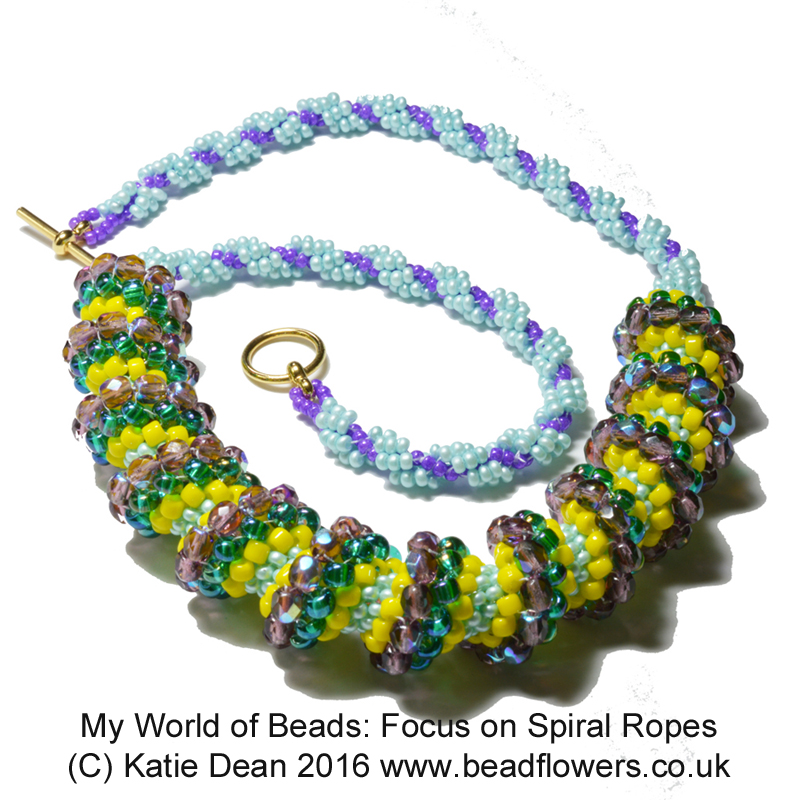Spiral Stitch Beading Technique and Tutorials
The basic spiral stitch beading technique is one of my favourite stitches. I love it because it’s so versatile, quick and easy. It was one of the first techniques I ever learned as a beginner. Yet, it’s still something that I use today. You can use it to make complete pieces of jewellery, or as design elements to mix with other bead-weaving techniques.
So, in this post, I’m going to teach you the technique, using a video demonstration. I will then give you some tutorials that you can follow if you prefer to work from written instructions or if you want some actual projects to try.
What materials do you need?
You simply need to grab some seed beads for this basic technique.
This can be any size of seed bead. So, in the video, I’m using size 6/0, which are nice and big. That will help you see what I’m doing.
If you want to try this, then size 8/0 is a great size to begin with. These will be big enough to work with, but also small enough to create a neat spiral.
If you already have some seed beads in your stash – any size – you can use those. I’ve also shown you some samples made with size 11/0 seed beads. And you can use cylinder beads as well.
Once you have mastered the basics, you can experiment with mixing different sizes. Usually, I tell people NOT to mix their seed bead sizes and brands (read this blog to find out why). But, you can actually work very happily with mixed sizes, even with slightly mis-shapen beads for this technique. So, if you’ve got packs of cheap, irregularly shaped seed beads, you can use them here.
As you’ll also see in the video, you can try this with other beads. I suggest anything up to 4mm will work well. So, you might consider using pearls, or crystals, or firepolish. Maybe even try some cube beads. If you are going to try this, then it’s best to use the seed beads for your ‘core’ and also to ‘frame’ any focal beads. You’ll see what I mean in the video. Plus I’ve given you a tutorial to try down below.
Tools and Thread
In addition to your beads, you will need some beading thread. As with any technique, good tension is key to a neat finish. So, you can work with whatever thread makes you feel comfortable. If you want some help on deciding what beading thread to choose, take a look at this section. I’ve given you some insights into the different thread types, and also how to work out which may be best for you.
You will just need a beading needle and scissors. You can also choose a clasp and I’ll show you how to attach that at the end of the video. So, it’s time to get beading!
Spiral stitch beading technique
In this YouTube video, I’ve introduced you to the technique, shown some samples of the stitch, then demonstrated how to work in spiral stitch, and how to add a clasp to make jewellery.
Spiral Stitch Beading Patterns
You’ve just seen me show you some samples of the spiral stitch beading technique in action. So, if you’re interested in any of the projects, here are the tutorials that I featured.
First, if you just want some written instructions for the basic technique, you can use this link to download a PDF tutorial.
The next necklace that I looked at in the video was a pattern that I called ‘Osteospermum’ (it reminded me of those flowers!). That uses spiral ropes to connect a front focal section and a beaded clasp. It’s suitable for intermediate level beaders.
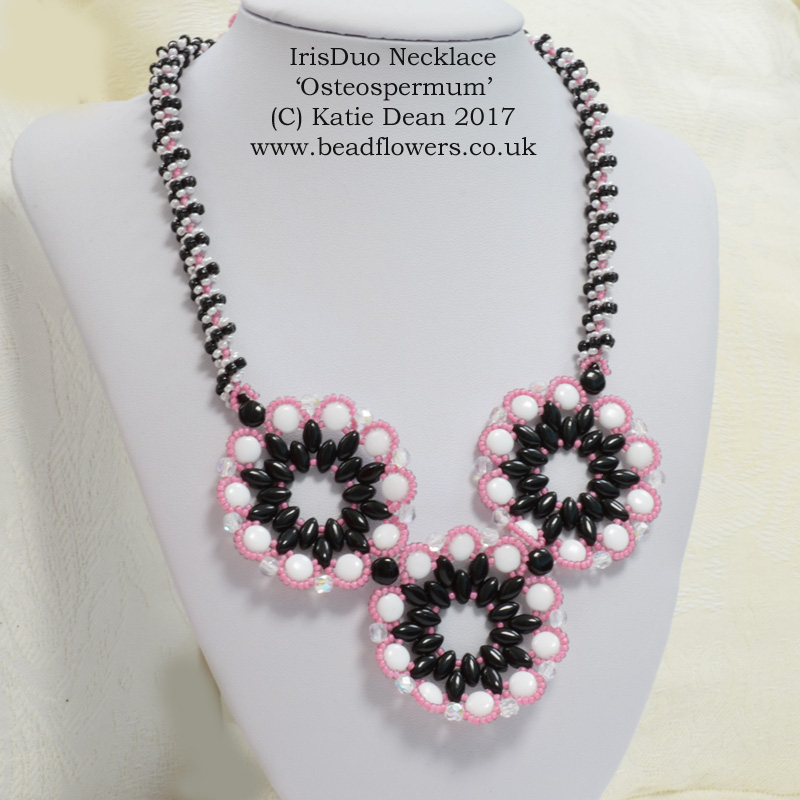
Click here to get your copy of the ‘Osteospermum’ IrisDuo necklace pattern
I then showed you how I used the spiral stitch beading technique to make a beaded rope for a Carrier beads necklace. This is actually a simpler project, so would be suitable for any level of beading experience.
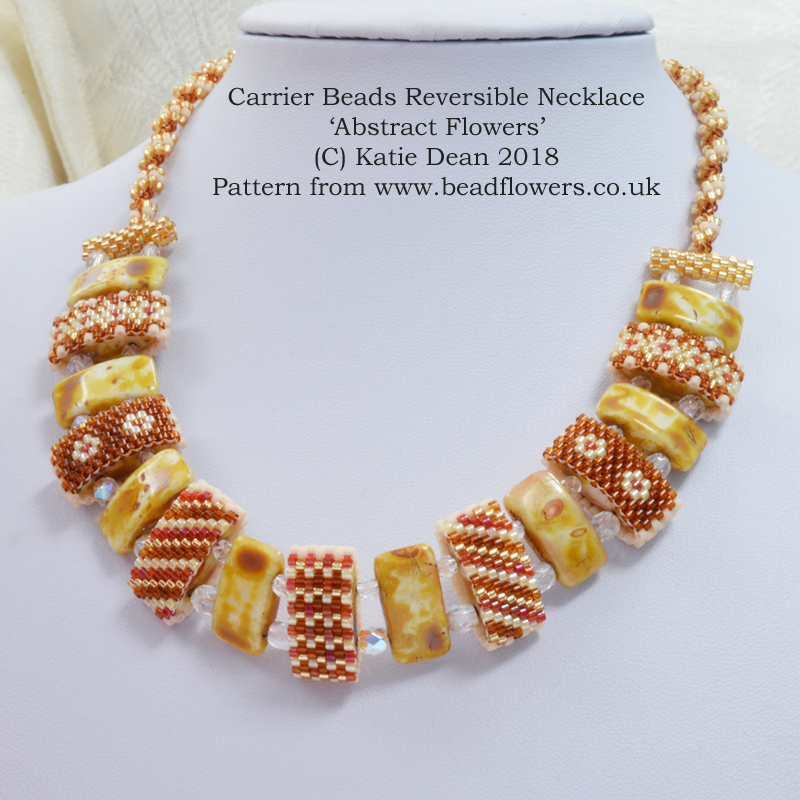
Click here to get the Carrier Beads Reversible Necklace Pattern
Now, here is the necklace that you saw me wearing in the video. I used the spiral stitch for the rope around the neck, and also to add some decorative elements to the front.
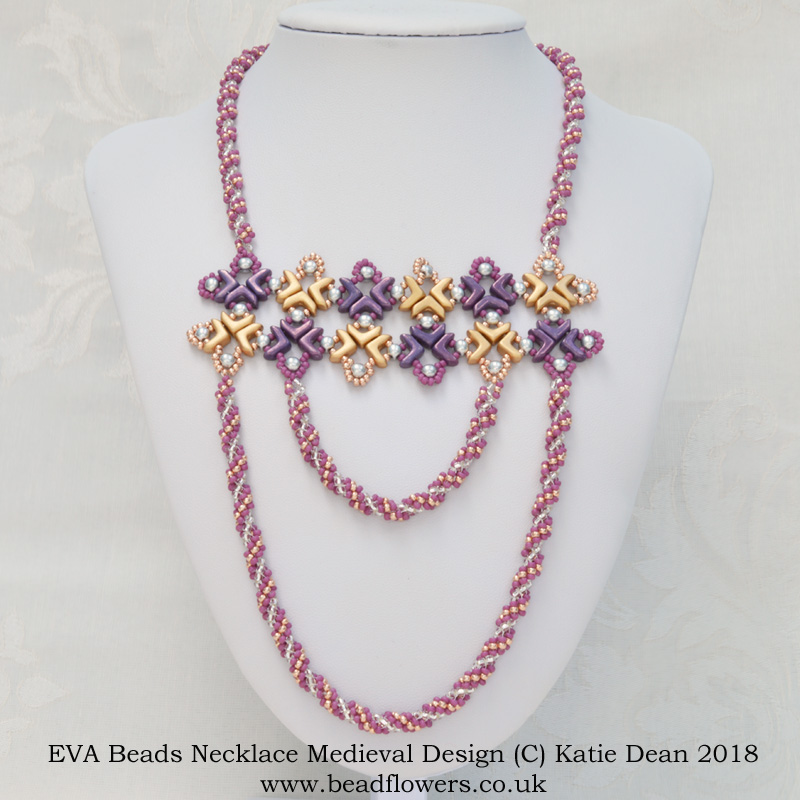
Click here to get the EVA beads medieval necklace pattern
If you like the idea of trying this technique with some different mixes of beads, then I recommend you try this pattern first. It creates a beautiful look, but the technique remains simple. And you can use it to make bracelets and necklaces.
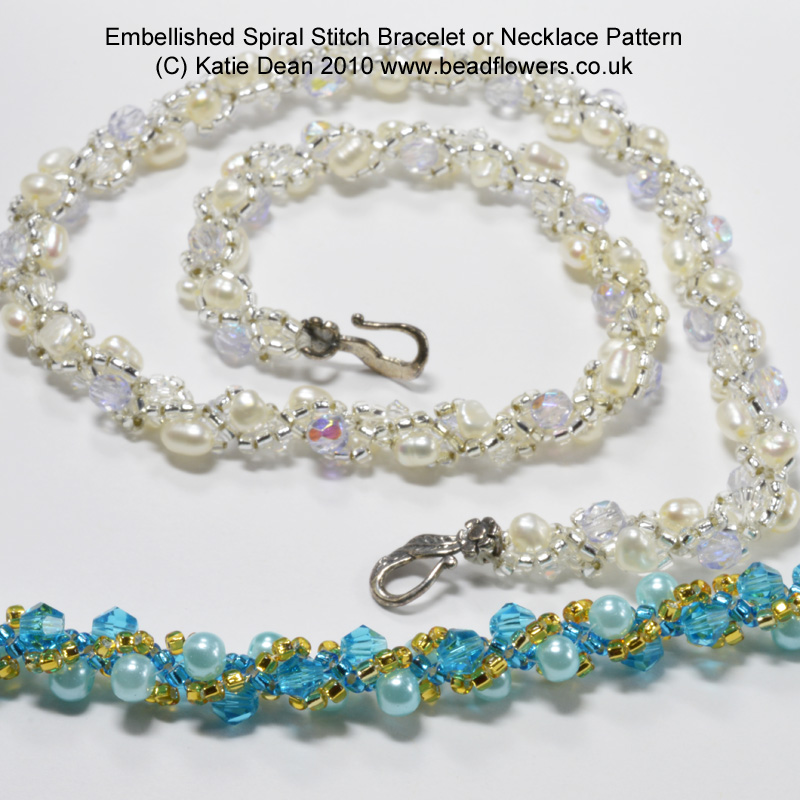
Click here to get the embellished spiral stitch beading pattern
And, last, but not least… How about trying this technique with some Superduos? It’s a lot easier than you might imagine, and the results are both beautiful and impressive. So, this gives you a new dimension if you’re wanting to create a collection of jewellery.
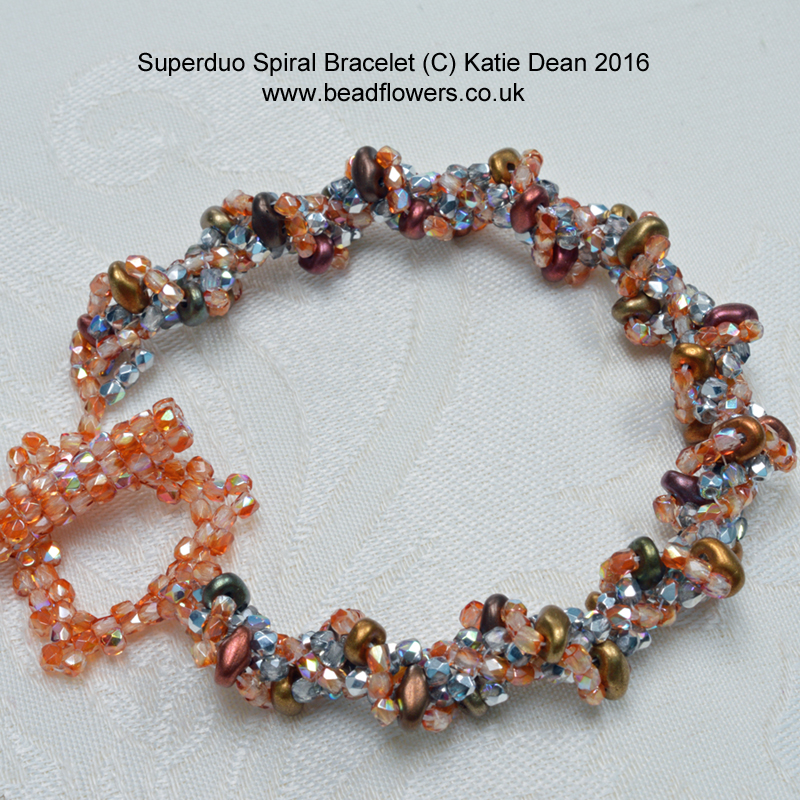
Click here to get the beading pattern
So, that gives you a few options to try out. I think you will fall in love with this versatile beading technique.
What can you do next?
Once you’ve mastered this technique, how about moving on to learn some other beading techniques? There is no ‘right’ order in which to learn. So, I suggest you simply go with whatever takes your fancy.
If you’ve seen a project that you want to make, find out what technique it uses and focus on learning that. Don’t be put off by the fear that you don’t know what you’re doing. A lot of techniques and projects really are a lot easier than you imagine.
So, you can use this section of the website to decide which techniques you want to try. You’ll get more free tutorials and videos to help you learn them. Then, invest in a pattern or two, and get practicing!





